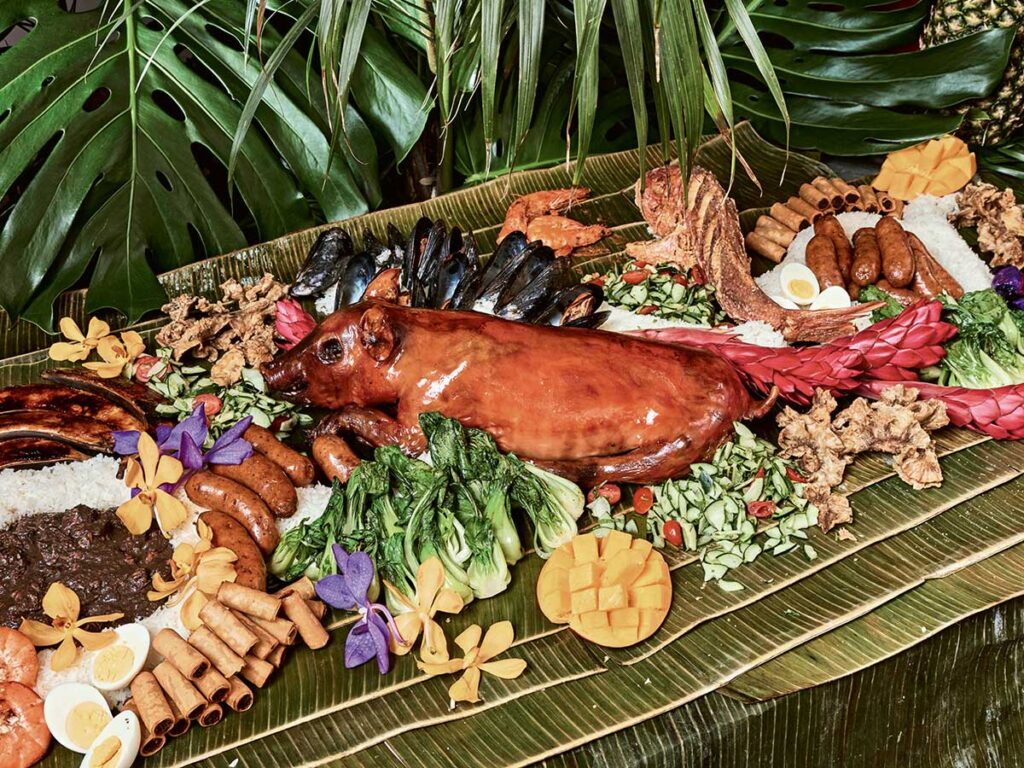In the Philippines, Christmas is a time for families to celebrate with delicious food, and a beloved tradition is the preparation and feasting on lechón, a whole roasted pig. Choosing the right pig and preparing the seasoning are crucial steps in making a succulent and flavorful lechón. The pig is then roasted over an open flame or in a charcoal pit, resulting in juicy meat and crispy skin. Once ready, the pig is served with condiments and steamed rice. Feasting on lechón has been a cherished Christmas tradition for generations, bringing families and communities together. It’s a delicious centerpiece for any festive celebration and a great addition to your holiday feast.
Feasting on Lechón – A Fascinating Filipino Christmas Tradition
Introduction
Christmas in the Philippines is a time for families to come together and celebrate with delicious food. One of the most beloved traditions during this festive season is the preparation and feasting on lechón, a whole roasted pig. The sight of a beautifully cooked lechón on the dining table is enough to make any Filipino’s mouth water.
Step 1: Selecting the Pig
Choosing the right pig for lechón is crucial to achieving a succulent and flavorful dish. The ideal size for a lechón is a small to medium-sized pig, around 20 to 30 kilograms. It’s important to select a healthy pig with tender meat, as this will ultimately affect the taste and texture of the lechón. In the Philippines, pigs for lechón are often raised specifically for this purpose, ensuring the best quality meat for the dish.
Step 2: Preparing the Seasoning
The key to a delicious lechón lies in the seasoning. A traditional lechón is stuffed with a mixture of garlic, onions, lemongrass, bay leaves, and a variety of herbs and spices. This flavorful stuffing infuses the meat with a rich and aromatic taste. Some recipes also call for the use of coconut milk or soy sauce to add depth to the flavor profile. The entire pig is then generously rubbed with salt and sometimes other seasonings to create a crispy, golden skin.
Step 3: Roasting the Pig
Roasting the pig is a labor-intensive process that requires skill and patience. The pig is typically skewered on a large bamboo pole and slowly rotated over an open flame or in a charcoal pit. This slow roasting process ensures that the meat cooks evenly and remains juicy, while the skin becomes crispy and crackly. The scent of the roasting pig is irresistible, drawing in eager onlookers who can’t wait to indulge in the feast.
Step 4: Serving the Lechón
Once the lechón is perfectly roasted and the skin is golden and crisp, it is time to serve this delectable dish. The pig is brought to the dining table whole, and the host or a designated carver will expertly slice the meat and crackle into portions for the guests. Lechón is often served with a variety of condiments such as atchara (pickled papaya), lechón sauce (a sweet and savory liver-based sauce), and steamed rice.
Conclusion
Feasting on lechón has been a cherished Christmas tradition in the Philippines for generations. The process of preparing and roasting the pig is a labor of love that brings families and communities together. The sight and aroma of a whole roasted lechón is truly a spectacle and a delicious centerpiece for any festive celebration. The rich and flavorful meat, paired with the crunchy, golden skin, is a culinary experience that is loved by Filipinos and visitors alike. So, this Christmas, why not consider adding a Filipino touch to your festive feast by feasting on lechón?
